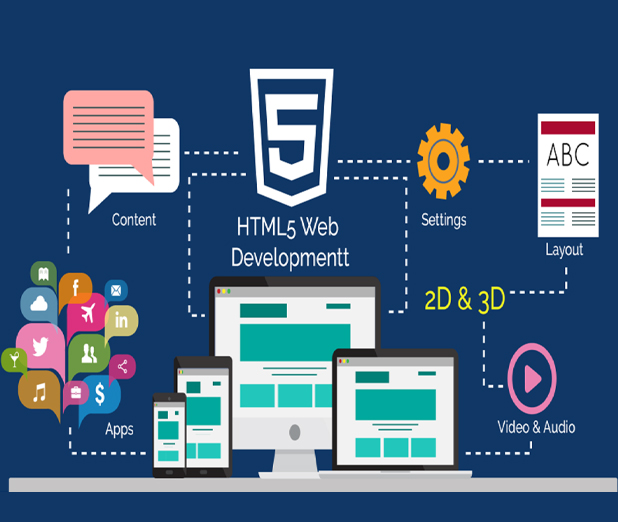Baeugi News Hub
Your source for the latest news and insightful articles.
HTML5: Where Old Web Meets New Tricks
Discover how HTML5 bridges the gap between classic web design and modern functionality. Unleash new tricks for an enhanced online experience!
The Evolution of HTML: From HTML4 to HTML5
The journey of HTML has been marked by significant advancements that reflect the evolving needs of web developers and users alike. Starting with HTML4, introduced in 1997, the language provided a solid foundation for creating structured documents on the web. It incorporated essential elements such as forms, tables, and multimedia support, but it lacked the flexibility and semantic clarity required for more complex web applications. Developers often relied on workarounds to implement features not natively supported, which created inconsistency across different browsers.
With the release of HTML5 in 2014, the landscape changed dramatically. This version introduced a more semantic structure with new elements like <header>, <footer>, and <article>, allowing developers to write cleaner and more understandable code. Moreover, HTML5 prioritized multimedia integration through native support for <audio> and <video> tags, making it easier to implement rich media without the need for plugins. As a result, the evolution from HTML4 to HTML5 not only enhanced functionality but also made the web more accessible and user-friendly.

Exploring HTML5 Features: What Makes It a Game Changer?
HTML5 has revolutionized the way web developers create and manage websites, introducing a plethora of new features that enhance functionality and user experience. One of the standout elements is the new semantic elements, such as <header>, <footer>, and <article>. These tags allow developers to define content structure more clearly, improving both SEO and accessibility. Additionally, HTML5's support for multimedia integration through the <audio> and <video> tags eliminates the need for third-party plugins, promoting a smoother and more consistent experience across different devices.
Another game-changing aspect of HTML5 is its enhanced support for mobile applications. With features like the Canvas API and Web Storage, developers can create rich, interactive applications directly in the browser. The Geolocation API also allows websites to provide location-based services effectively, increasing engagement and utility for users. Overall, the adoption of HTML5 not only improves performance and usability but also helps in building responsive designs that cater to the growing number of mobile users.
How HTML5 Enhances Mobile Web Design and User Experience
HTML5 has significantly transformed the landscape of mobile web design, offering a wealth of features that enhance both functionality and aesthetics. With its improved semantic structure, developers can create cleaner and more organized code, making it easier for search engines to index content. Additionally, HTML5 supports responsive design elements such as the <picture> tag, enabling websites to adapt seamlessly to different screen sizes. This ensures that users have a consistent and visually appealing experience across a variety of devices, from smartphones to tablets.
Moreover, the introduction of new APIs in HTML5, such as the Geolocation API, allows for a more personalized user experience. Users can access location-based services effortlessly, enhancing engagement and interactivity. Furthermore, the native support for audio and video elements means that users can enjoy rich multimedia content without the need for third-party plugins, leading to faster load times and improved performance. In summary, HTML5 not only empowers developers to create more dynamic mobile websites but also elevates the overall user experience.